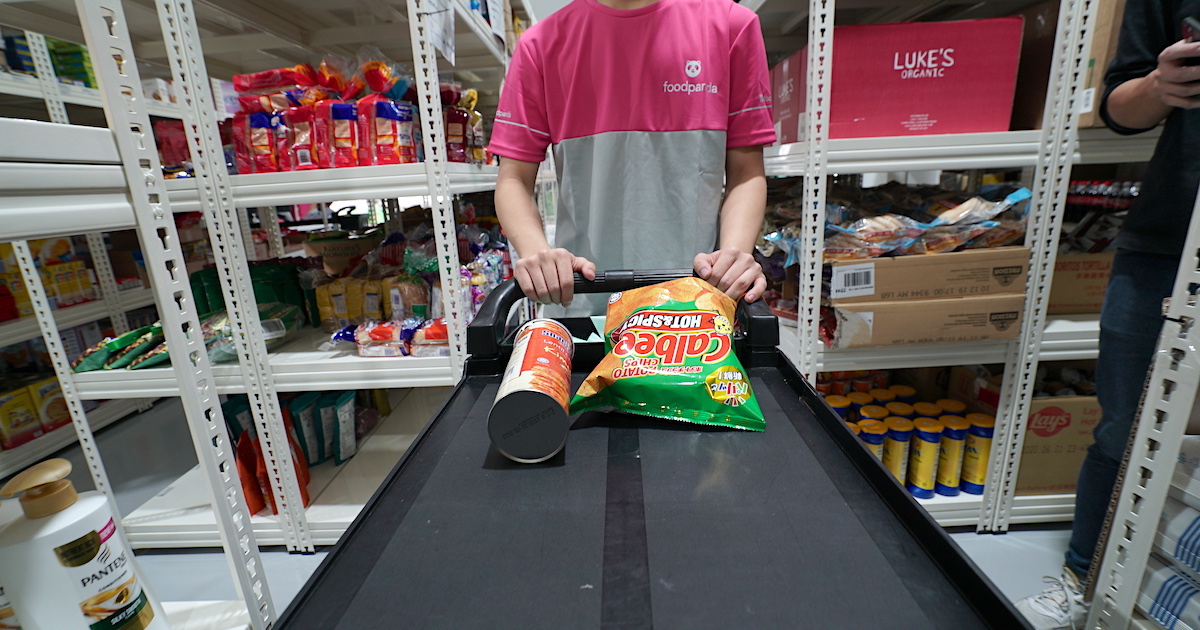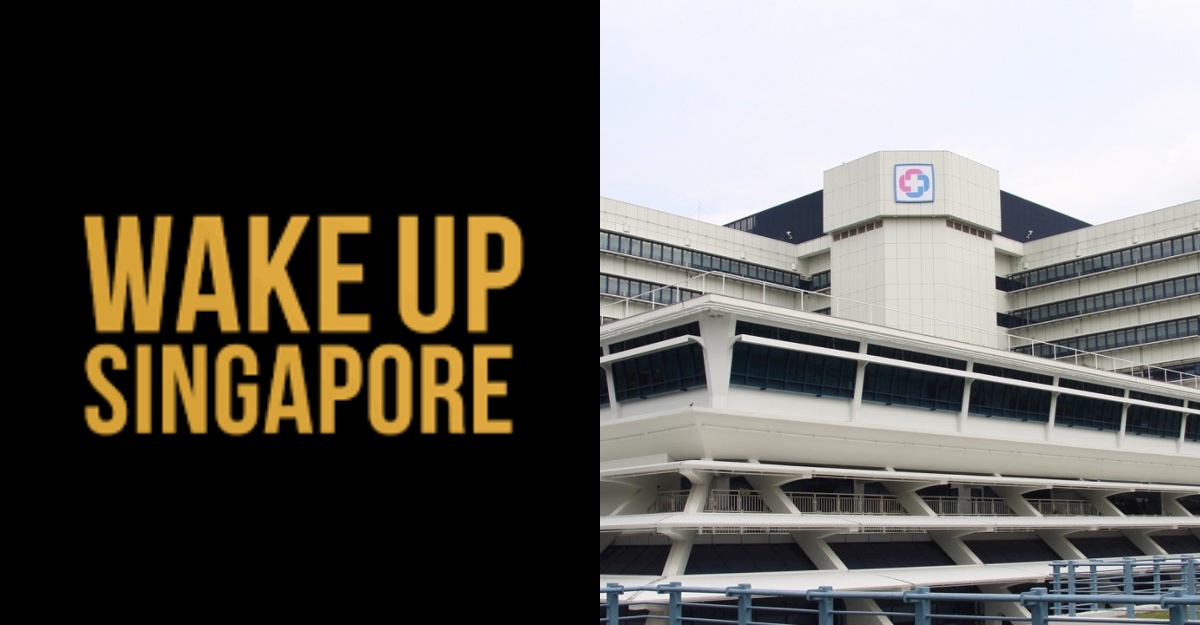Homegrown startup honestbee has dominated the headlines in the past year. A few months after they launched its glorified “new-gen retail” supermarket habitat, their business started going downhill.
When honestbee halted its grocery delivery arm last year, it cited “stiff competition” in the groceries markets in Singapore as it faced competition from the likes of Cold Storage, NTUC and RedMart.
It ended up ceasing its food delivery business to focus on its core grocery business to reduce operating costs.
It’s clear that juggling both verticals at the same time is tough, but food delivery firm foodpanda has went ahead to make its foray into the online grocery delivery market.
Foodpanda Enters The Online Grocery Delivery Space In S’pore
Foodpanda is the newest kid on the block, with existing players like Lazada-backed RedMart, e-commerce giant Amazon Prime and local supermarket chain NTUC FairPrice already dominating the space.
It entered the online grocery delivery space with a bang, launching two different services: pandamart and pandanow.
Back in October last year, foodpanda piloted its on-demand delivery service of groceries, flowers and household essentials.
Called pandamart, it offers goods from over 1,000 partner retailers nationwide (including household names like FairPrice Xpress and Cheers), promising a delivery time of 25 minutes and under.
On the other hand, pandanow is “Singapore’s only 24/7 platform for on-demand delivery of groceries and household items”. In contrast to pandamart, it promises delivery in just 15 minutes.
With its speedy delivery time, it sounds like a great service for consumers, but why exactly is foodpanda offering grocery delivery, especially after the prominent failure of honestbee?

According to Diego Pinto, Director of Retail at foodpanda Singapore, grocery delivery has been on their business map for a long time now. They’ve simply been “waiting for the right time” to launch it.
He shared that for the past eight years they’ve been around, they’ve received many requests from customers to extend their service beyond food delivery.
“We spent time to let our infrastructure mature,” he said, referring to a strong customer base and rider fleet.
“The tech is (also) very, very important to make this work,” he added.
Why Foodpanda Is Different From Its Rivals

One might think that they would be daunted by the stiff competition, but Diego strongly feels that foodpanda is in a unique space.
They’re doing things “differently”, he stressed. In fact, there are four pillars that their service champions: speed, assortment, affordability, and 24/7 availability.
“I think what we have here is a very interesting proposal. Speed is super, and it’s great (that we deliver) groceries in 20 minutes,” he said.
“Our assortment is also much bigger than what you can find in regular convenience stores. We are also very affordable, with prices that are similar to the supermarkets.”
To add on, the fact that they’re open 24/7 makes it convenient for customers to purchase any essentials past the supermarket’s operating hours.
However, is there really a demand for a round-the-clock grocery delivery service?
Diego simply said that they have a good understanding of their customers, but did not cite any market research to justify the 24/7 service.
Regardless, Diego shared that foodpanda has seen “good response” from users for both pandamart and pandanow, but refused to disclose any figures.
He reasoned that customers are happy because foodpanda has continually fine-tuned their service based on user feedback garnered during their pilot in October so it’s now optimised.
How They Deliver In 15 Mins
Unlike pandamart which delivers from various stores, pandanow stockpiles their goods in a warehouse and conducts their packing and delivery from there.
In other words, pandanow is operated and supplied through foodpanda’s own inventory.
“We go into a buyer-supplier relationship with big suppliers like Coca Cola, PNG and Unilever. We buy from them, and they supply all of the stocks that are here (in our warehouse),” said Diego.
The benefit of having their own inventory is that they have control over the assortment and the flexibility to adjust the supply of certain products based on user demand.

While foodpanda adds products to their inventory everyday, Diego said that “this is not the end of the full assortment” and pandanow aims to stock more variety in time to come.
He added that pandanow’s selection is carefully curated — they conduct a market study to understand what people were buying the most.
For perishable items like bread and milk that have a limited shelf life, foodpanda actually donates the unsold stock to charities.
“(Since) we are very much against waste as a sustainable company, we choose to donate to people who actually need these items. One company that we’re working with on this is called Free Food For All, which donates all the breads and fresh produce that we have to neighbourhood communities,” said Diego.
Pandanow currently has five warehouses in Singapore serving areas with a “high consumer density”, such as Woodlands, Yishun, Geylang, Kallang, Novena, Katong and Bukit Batok.
However, what’s surprising is that they do not have a supply of riders on-site to readily respond to orders.
“We tap on the same pool of 8,000 delivery riders from our food delivery fleet. Once an order is placed, our smart algorithm will assign an order to the nearest available rider,” explained Diego, adding that they have the largest rider fleet in Singapore.
The assigned rider will then proceed to the warehouse to collect the order, which are manually packed in “less than two minutes” — this is made possible by the small scale of their warehouses.
Although the promised delivery time is 15 minutes, Diego said that it’s “dynamic” and is subject to fluctuate. On the different times that I logged in to the app, it varied between 20 and 35 minutes.
The discrepancy in delivery timing is due to external factors that “(they) sometimes cannot control” such as bad weather, heavy traffic, or a surge in order.
However, they make it a point to update their app in real-time to reflect an accurate delivery timing so users can manage their expectations before they place an order.
Money Matters: Is It Financially Viable?
Beyond the speedy delivery time, pandanow also currently offers free delivery at no minimum order, and are pushing out promo codes for cheaper orders.
All these sound great to the consumers, but it begs the question: how do they intend to stay financially viable in the long run?
As discussed in a previous article, we established that the margins for online grocery delivery are really small thanks to the competitive landscape.
One also needs a huge economy of scale to at least break even on the delivery fees, before even thinking of earning any margins to cover the operations cost.
Diego revealed that pandanow’s main overheads include warehouse rental, products procurement, as well as manpower costs. Since they don’t charge delivery fees, how then do they expect to cover these costs?
Diego simply said that making profits is not their key focus right now. Their commitment is to “make this grow” instead.
“In the initial launch phase of pandamart and pandanow, our focus is on reaching as many people as possible and incentivising them to try the new services. That said, foodpanda has built an extensive and efficient infrastructure in Singapore to support promotions like free delivery and discounts,” said Diego.
“On top of that, we are fortunate to have the support of our parent company Delivery Hero, as we continue to trial new services and innovations that our customers will enjoy.”
When asked if they have a ‘formula’ to capture the online grocery delivery space in Singapore, Diego said one must first have a “unique selling proposition” in order to compete.
“And of course, as a company, a thing that is in our DNA is to always ride the innovation wave. We’re always going to keep moving,” he added.
30 Pandanow Warehouses By End-2020
So what’s next for foodpanda now?
According to Diego, pandanow is currently serving many neighbourhoods so their selection is catered to fit this demographic.
Beyond the heartlands, they are looking to branch out to serve other areas such as the Central Business District (CBD), Tiong Bahru, Tampines/Pasir Ris, as well as the “far west” such as possibly Jurong East and Boon Lay.

Diego further shared that pandanow is looking to set up 30 warehouses by the end of this year for an islandwide coverage.
“When we serve the CBD, we may look at curating our selection and offering things that are more suitable for people who are working in their office from morning to night.”
“This is part of our commitment to always work towards having the perfect assortment for different vicinities. Every pandanow warehouse will fit the needs of the people around it.”
Featured Image Credit: Vulcan Post








